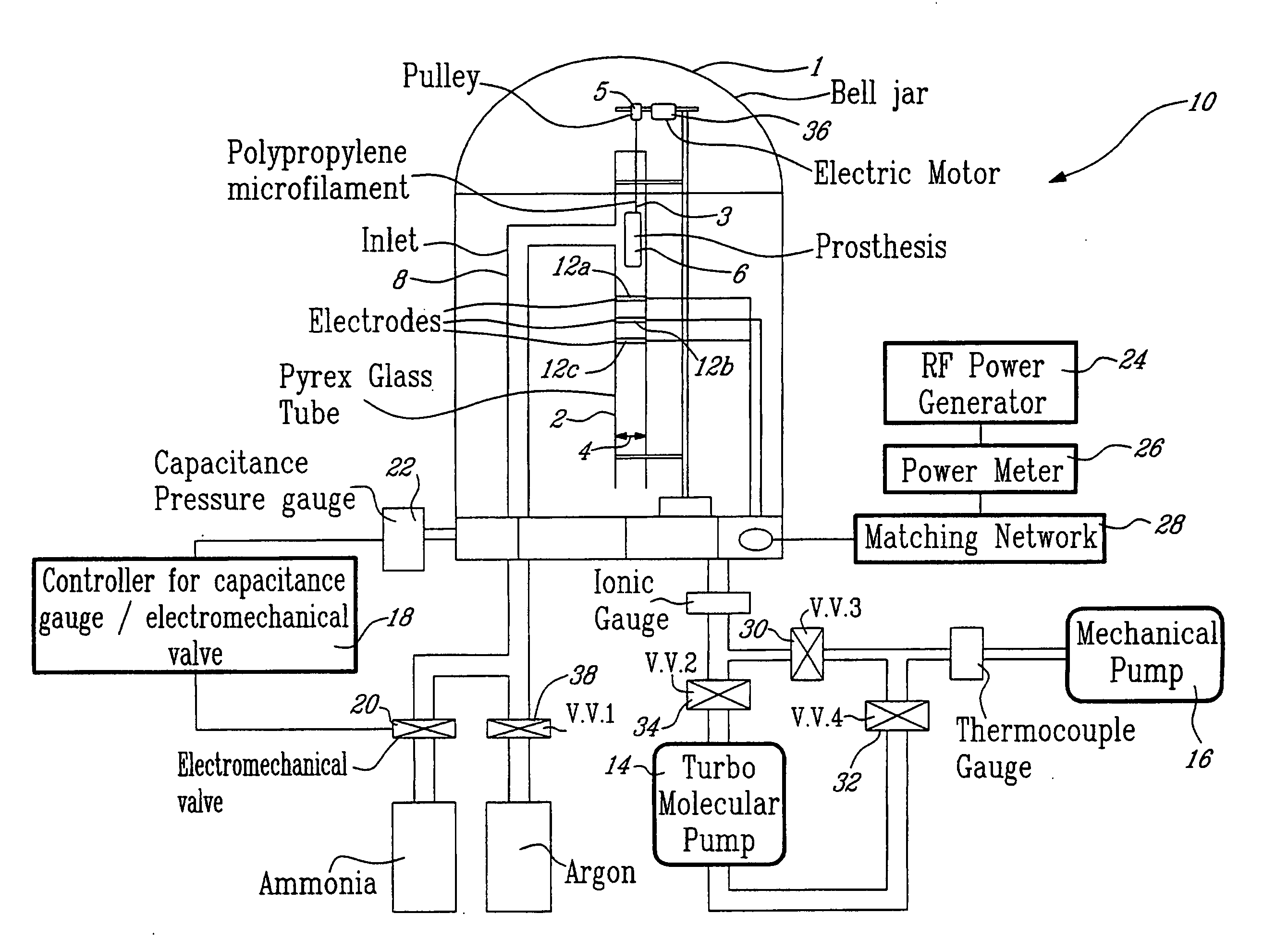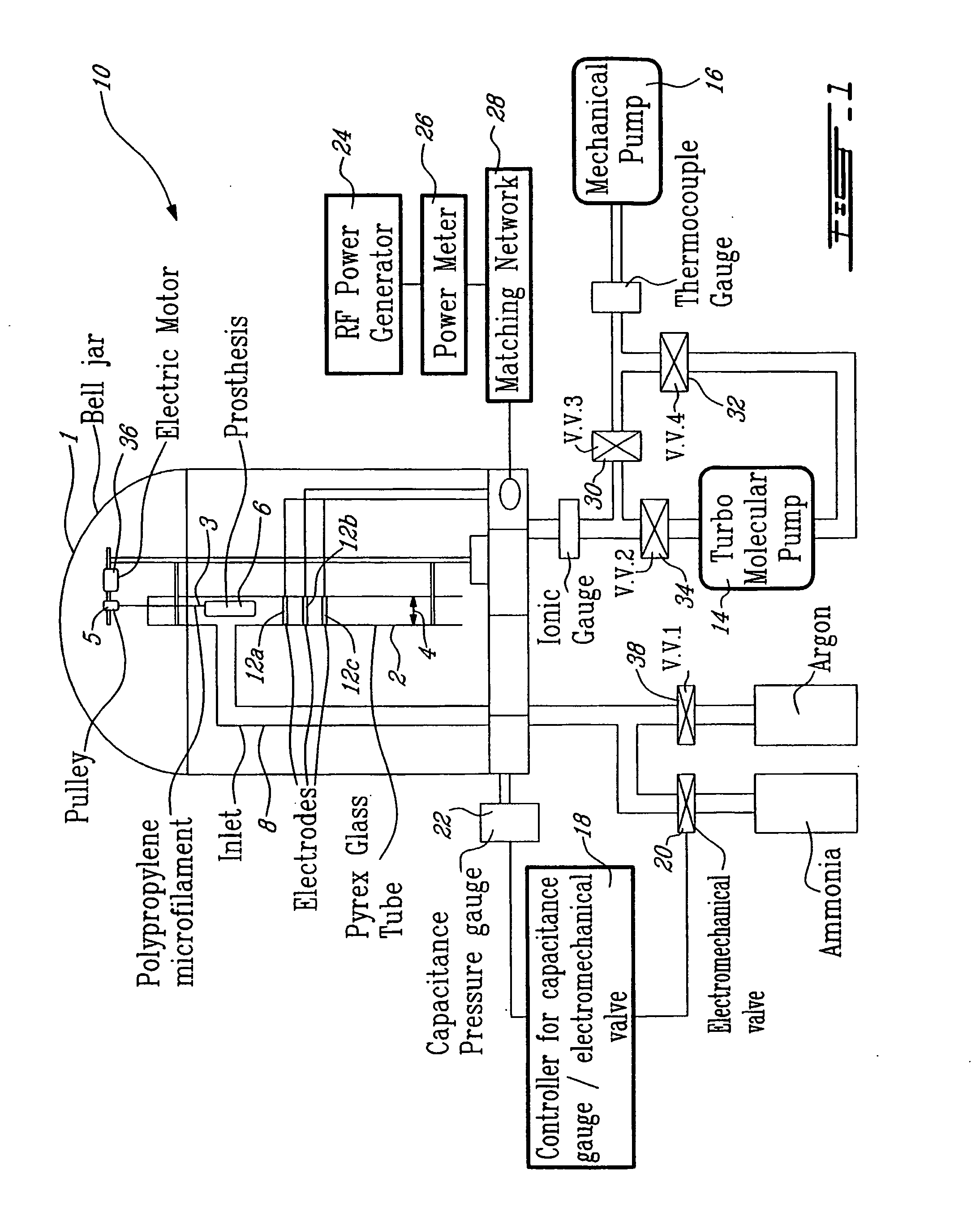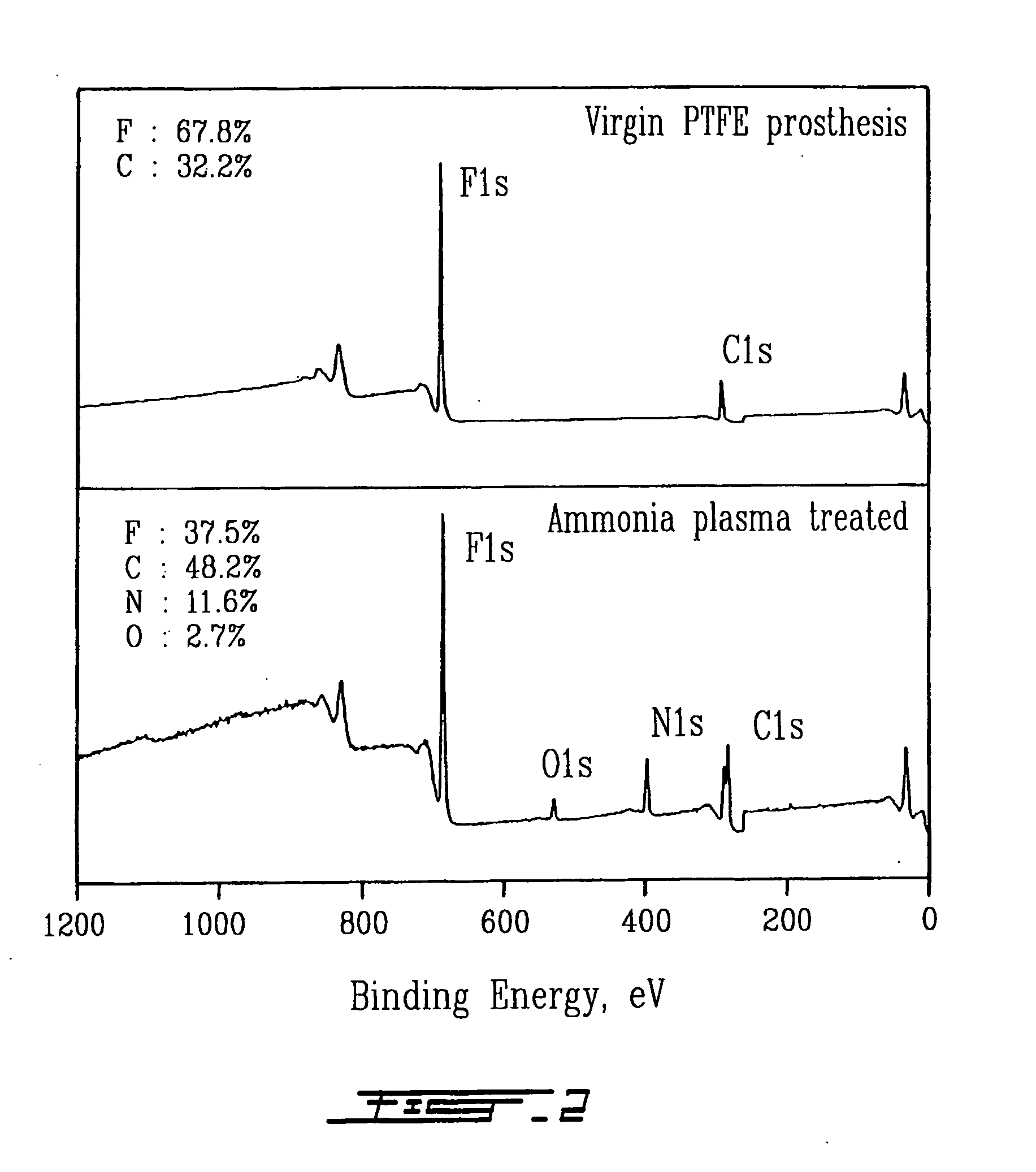Plasma surface graft process for reducing thrombogenicity
a plasma surface and thrombosis technology, applied in the field of thrombosis reduction by plasma surface grafts, can solve the problems of complex interactions between blood and synthetic materials, unacceptable long-term blood-compatible synthetic materials, etc., and achieve the effect of improving the hemocompatibility of vascular prostheses and enhancing the interfacial reaction
- Summary
- Abstract
- Description
- Claims
- Application Information
AI Technical Summary
Benefits of technology
Problems solved by technology
Method used
Image
Examples
Embodiment Construction
[0043] For the present purposes, we give the following definitions of the terms “untreated” and “treated”. “Untreated” means a commercially available vascular prosthesis, to which the inventors did not apply any surface modification treatment. “Treated” means a commercially available vascular prosthesis to which the inventors applied the surface modification procedure hereafter described.
[0044] The term “animal” as used herein is meant to signify human beings, primates, domestic animals (such as horses, cows, pigs, goats, sheep, cats, dogs, guinea pigs, mice, etc.) and other mammals. Generally, this term is used to indicate living creatures having highly-developed vascular systems.
I. Pre-Treatment of the Inside Surface of Vascular Prostheses with Ammonia Radio Frequency (RF) Plasma
Experimental Method
[0045] (The Experimental Method is described with reference to FIG. 1.)
Materials
[0046] Microporous ePTFE vascular prostheses 6 (6 and 10 mm ID) with a fibril average length of 2...
PUM
 Login to View More
Login to View More Abstract
Description
Claims
Application Information
 Login to View More
Login to View More - R&D
- Intellectual Property
- Life Sciences
- Materials
- Tech Scout
- Unparalleled Data Quality
- Higher Quality Content
- 60% Fewer Hallucinations
Browse by: Latest US Patents, China's latest patents, Technical Efficacy Thesaurus, Application Domain, Technology Topic, Popular Technical Reports.
© 2025 PatSnap. All rights reserved.Legal|Privacy policy|Modern Slavery Act Transparency Statement|Sitemap|About US| Contact US: help@patsnap.com



